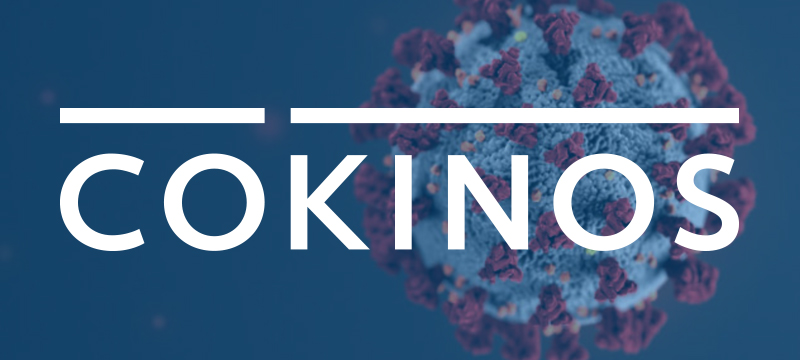The Best Defense is a Good Offense – Protect Yourself from COVID-Related Lawsuits

The Institute for Health Metrics and Evaluation (“IHME”) predicts that COVID-19 infections and hospitalizations will peak in Texas on April 29, 2020. Cities[1] and counties such as Harris County, Bexar County, Travis County, and Dallas County are monitoring construction sites and increasing job site safety mandates and plaintiff lawyers are advertising for injury or illness for the construction workforce. We value your trust in our services and advice and strive to ensure we keep you informed of evolving risks, as outlined below. Risks will vary based on fact-specific circumstances that our Firm can address, tailored to your business needs.
In the next two weeks, experts predict that COVID-19 infections and impacts on workforce, labor, and supplies will increase. Your best strategy is to prepare and formulate your document and contingency plan today. Affecting employment and labor, we anticipate an increase in OSHA complaints or violations, negligence lawsuits, and wrongful death claims from employees or others allegedly infected through construction work. Many contracts contain broad form indemnity for bodily injury, illness, or death as permitted under the Texas Insurance Code, Chapter 151. Failure to adhere to government orders relating to safety could be viewed as more intentional acts that negate coverage under a commercial general liability policy. The law is evolving on how insurance companies will administer COVID-19 claims. It is vital for your business to stay ahead of these issues to avoid and reduce exposure in a post-pandemic world.
Steps To Protect Against COVID-Related Employee Safety Lawsuits
If an employee contracts COVID-19, employers may face actions or claims for liability alleging that the employee contracted the virus in the workplace due to the employer’s failure to maintain a safe work environment. These actions may take a number of forms, including enforcement actions by OSHA, claims for workers’ compensation, or civil actions for negligence. In one recent example, the estate of a former Walmart employee brought wrongful death lawsuit against the after the employee died from COVID-19 complications.
To proactively position themselves to endure potential legal risks, employers that can demonstrate that they acted in good faith to reduce the risk of transmission and protect workers’ health will be best positioned. Companies should make sure they are following applicable health guidance, abiding by relevant laws and orders, and taking steps to enhance workplace safety and address related employee concerns. For instance, employers should emphasize respiratory etiquette and hand hygiene by disseminating posters informing employees to stay home if sick and cough and sneeze etiquette, and hand hygiene. Employers should follow OSHA’s Guidance on Preparing Workplaces for COVID-19 and keep abreast of updates to OSHA and CDC guidance for businesses.
OSHA Compliance
An employer’s duty of care is controlled by the general duty of care established by the Occupational Safety and Health (OSH) Act, which requires employers to provide a safe and healthy workplace for all employees. OSHA requires companies to provide employees with a workplace “free from recognized hazards that are causing or are likely to cause death or serious physical harm to his employees.” Violations of OSHA, including this “general duty” clause, are subject to enforcement actions and civil penalties, including additional fines for willful or repeated violations. Willful violations resulting in death can also give rise to criminal liability.
OSHA recently created the OSHA COVID Portal, publishing several coronavirus related resources for employers, which can be found here: https://www.osha.gov/SLTC/covid-19/ The COVID Portal includes a link to applicable OSHA standards.
OSHA has provided several easy to use resources for employers to comply with the general duty clause:
- Ten Steps All Workplaces Can Take to Reduce Risk of Exposure to Coronavirus
- Guidance on Preparing Workplaces for COVID-19
- Preventing Worker Exposure to Coronavirus
- One-sheet summary regarding Worker Exposure Risk to COVID-19
Employers should also follow Enforcement Guidance for Recording Cases of Coronavirus Disease 2019 (COVID-19) for work-related cases of coronavirus. Under this guidance, employers with notice of several cases developing among workers who work closely together without an alternative explanation will likely need to report the illness on their OSHA 300 log.
Follow CDC Guidance
The Center for Disease Control continues to update guidelines Safety Practices for Critical Infrastructure Workers Who May Have Had Exposure for when an essential employer should permit a critical infrastructure employee to return to work after a coronavirus exposure (defined as a household contact or having close contact within 6 feet of an individual with confirmed or suspected coronavirus for up to 48 hours before the individual became symptomatic).
The CDC currently recommends that an asymptomatic employee can return to work as long as they are asymptomatic, and follow the following steps:
- Employers should measure the employee’s temperature and assess symptoms prior to them starting work. Ideally, temperature checks should happen before the individual enters the facility.
- Employees should self-monitor under the supervision of their employer’s occupational health program.
- The employee should wear a face mask at all times while in the workplace for 14 days after last exposure. Employers can issue facemasks or can approve employees’ supplied cloth face coverings in the event of shortages.
- The employee should maintain six feet and practice social distancing as work duties permit in the workplace.
- Clean and disinfect all areas such as offices, bathrooms, common areas, shared electronic equipment routinely.
Additionally, the CDC reminds employers to immediately send home any employee who becomes sick during the workday. In those instances, workspace surfaces should be cleaned and disinfected before allowing employees in that space. Contact tracing of people that the sick employee came in contact (within six feet) during the time the employee had symptoms and two days prior, it also recommended.
Steps to Protect Your Business From Negative COVID-Related Impacts
In addition to employee safety, the long term viability of your business success can hinge on your plans for COVID impacts.
Contract Review and Notices
Supply chains are impacted and lack of a workforce may lead to increases in owner claims, terminations for convenience, or force majeure. Review Project contracts for language that may alleviate costs and time to respond to Owner delays, government impacts, or illness interruptions.
Whether the Project is negotiated on the AIA forms, or a private form, contracts may contain remedies that require notice within certain time frames. Failure to timely submit a claim can result in the waiver of certain rights and remedies. Force majeure clauses are generally a time only extension. For Projects experiencing delays with increased safety monitoring, supply chain deliveries, or manpower reductions, a thorough review of the Project contract could reveal a claim for increased time and costs. Notices should be sent to all contracting parties (including the architect if under an AIA form) to document delays, disruptions, or increased safety compliance costs as permitted under the contract. When disputes arise, parties must look to efforts to mitigate damages. Often times, the duty to mitigate is expressly mentioned in the contractual relationship.
Following the Law
We are already seeing the issuance of warnings and citations by local law enforcement for failure to adhere to local mandates. Such citations may be a default of your contract and grounds for termination. Appropriate responses for addressing local law enforcement, Texas Department of Public Safety officers, or other government personnel vested with authority to enforce COVID-19 restrictions on projects should be considered. At all times, best practice is to comply with the requests of government directives.
Protect Your Employees and Your Company
Document safety on the Daily Job Report with links of photo images, test or health inspection reports, sanitization, and other enhanced cleaning processes, and other COVID-19 and OSHA guided health safety processes. Project files and software should maintain a COVID-19 response folder with daily updates to include city or county orders, compliance with such orders and any entity-directed change to such orders, through written or photographic evidence, and CDC and OSHA guidance. Many software sites are offering free software additions tailored to COVID-19. Written and published protocols for deliveries to jobsites, employee health status, and disclosure of COVID-19 infections should be circulated to those entering the work site daily. As regulations change, be prepared to update any protocols accordingly. If third parties are conducting testing, ensure timely disclosure of any health issues to comply with possible contract notice requirements and government regulations. Each of these steps can be evidence of best efforts to mitigate damage claims by various entities.
Explore whether you can establish policies and practices, such as flexible worksites (e.g., telecommuting) and flexible work hours (e.g., staggered shifts), to increase the physical distance between employees, as well as between employees and third parties if authorities recommend the use of social distancing strategies. Likewise, you should review human resources policies to make sure that policies and practices are consistent with public health recommendations and are consistent with existing state and federal workplace laws, including newly implemented Families First Coronavirus Response Act (visit the Department of Labor’s and the Equal Employment Opportunity Commission for updated opinions on employer responsibilities).
Hiring a Third Party to Administer Health Checks
Ensure the contract language suits Project-specific needs and protects your company if the third party makes an error in reporting or sharing employee health information. Testing irregularities occur and can adversely impact or shutdown operations at the Project. Cleaning and sanitizing the Project can be costly. At the same time, most contracts require notification of a safety threat to the Project. Again, each contract can alter the manner in which claims or costs can be recovered by owners, contractors, and subcontractors.
Project Cessation
If the Project is stopped, be prepared to ensure safety of the jobsite while the Project is closed. Locked jobsites with security and monitoring should be implemented for any work stoppage. Provide for fencing and protection of supplies and materials stockpiled at the jobsite. For prolonged periods of abandonment (infected job site, government delays), consider use of abandonment in your contract or ensure your insurance coverage does not lapse if you intend to continue the work. Abandonment claims generally arise after 30 days of ceased work.
Project Solvency Concerns
During this time, the financial viability of owners, general contractors, subcontractors, and suppliers may change. Many contracts provide for assurances of financial viability upon request. Ensuring the payment stream through a request to verify financial resources is recommended.
We at Cokinos | Young can help you manage the uncertainties of COVID-19 to mitigate and avoid future legal exposure.
[1] City of Austin, COVID Supplemental Guidance relating to Construction Businesses.

